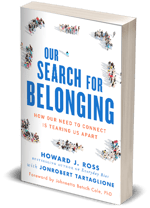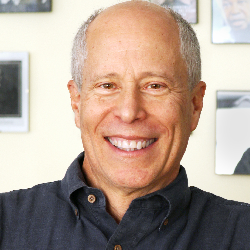It is no secret to anyone that we are living in a time of almost unparalleled polarization. A look at the daily news or social media posts confirms that our need to connect with people like ourselves is increasingly placing us at odds with people we view as "the other." Now, more than ever, this tendency is causing us to form unhealthy attitudes against those with political, religious, and cultural viewpoints different from our own. This leaves us strongly connected within our social organizations and yet deeply divided as a society.
It is inevitable that we bring some of this toxic energy with us to work every day. For many of us, our work environments have put us among the most diverse people of any place in our lives. For that very reason, our workplaces can pose a challenge but may also have the most significant potential for uniting us across differences.
Don't be afraid to open Pandora's box
Workplaces tend to represent a microcosm of society where people will naturally gravitate toward and connect with their "tribes." Organizations can find it difficult to avoid the stigma that such segregation creates. Studies show that workplace tension causes both general stress and an increased reticence in talking about controversial issues, even when the issues impact the work.
Many employers are hesitant to discuss these issues at work. Executives can worry they are opening a Pandora's box of problems with no easy solutions.
What we can easily forget, in our desire to be comfortable and avoid conflict, is that Pandora's Box is only a problem because there is something in it. That "something" will find a way to create challenges, whether we address it openly or not. However, when companies ignore how the tribalism which has infected our society can spill over to the workplace, it can undermine the work environment and jeopardize the company's goals and objectives.
That's why organizations need to take up the important work of addressing issues of diversity and culture and finding common ground to create a culture of belonging.
New research in social, neuro, and cognitive sciences has shown us that the need to belong is a fundamental human need. We are social animals by design, and how we fit into the groups is a part of our prime drivers in life. That means creating environments in which all people feel a sense of connection.
Nurturing belonging, together
African American educator and community leader Dr. Johnnetta Betsch Cole once described "diversity" as being "invited to the dance" and "inclusion" as "actually being allowed to dance." Furthering the metaphor, we might say the "belonging" occurs when "they are actually playing some of my music!" In other words, not only are we included in another's culture, but our needs, concerns, and ways of being are also part of the design of the culture itself.
How do we make this happen? Alongside the skills training that they provide, it's crucial that organizations give their employees training in interpersonal communication, inclusion, and addressing unconscious bias, and opportunities to address their issues constructively.
Some companies have instituted training and programs to unite staff across differences. Target and General Mills, among others, for example, sponsor "courageous conversations" that allow employees with different backgrounds to discuss topical issues, such as race, transgender rights, the travel ban on predominantly Muslim countries, etc.
Kaiser Permanente's former CEO, George Halvorson, established a successful model for organizational belonging by coaching executives and department heads to act more as team leaders than bosses. Teams were responsible for instituting improvements that promoted the organization's established values, and they shared the best practices throughout the organization. Halvorson explained, "When our organization fosters a culture of 'us,' we look out for each other in a different way. It can override our individual and societal belief systems."
Create a culture of belonging at your organization
The workplace may be our greatest hope for reestablishing connection between our different "tribes." Bridging divides in our organizational lives creates greater harmony and cooperation. Not only does engaging with different groups promote new insights, encourage innovation, and enhance business success, it also validates the humanity of people on all sides of the issues and, in doing so, can contribute to greater civility in our society.
Here are five strategies I recommend pursuing to help your organization to bridge differences and build and sustain a sense of connection.
1. Communicate a clear vision and purpose
Set your vision clearly, so that every employee understands and can articulate the company's purpose and goals. Frequently communicating and reinforcing a compelling and positive organizational narrative around belonging and the value of diversity helps employees to internalize it. Each staff member can then see him- or herself or themselves as part of a team, which helps to cancel out polarities caused by differing viewpoints.
2. Approach the issue systemically
Create systems and structures that promote diversity, inclusion, equity, accessibility, and belonging. Work to remove bias across administrative systems – from recruitment to hiring to onboarding to performance reviews and more. It is also important to recognize that diversity involves more than representation. It's about cultivating open-minded thinking and connection.
3. Create opportunities for dialogue on challenging subjects
Create a safe space for conversations that involve different points of view, but make sure they happen as dialogues rather than debates. Set ground rules, and ask everyone to move beyond their individual biases. Ask them to resist the tendency to convince others or to win the argument. Learning to listen actively to points of view you may not agree with can translate to better employee-to-employee relations as well as employee-to-customer relations.
4. Invite employees to share their own stories
Sharing personal stories helps in promoting a sense of belonging—of being heard and seen. Sharing stories is a way to learn not only about each other personally but also about other world views. Carve out time for employees to share their stories in meetings, in employee resource groups, in diversity education, or anyplace it may fit into the employee experience.
5. Acknowledge the contributions of individuals
Organizations function best as a unit when all associates have a stake in the organization's success. It's essential that employees understand their individual roles in serving the greater good. Does the person at the front desk understand how welcoming people can affect the experience that follows? Are the people who do administrative work and never see the customer acknowledged for the way they contribute to the customer experience? The acknowledgment of everyone's contribution to the mission keeps people focused on the big picture and the sense of being part of a team.
 Howard Ross is a lifelong social justice advocate and the founder of Cook Ross Inc. He's considered one of the world's seminal thought leaders on identifying and addressing Unconscious Bias. Howard has delivered programs in 47 states and over 40 other countries to audiences including Fortune 500 companies and major institutions within healthcare, government, and non-profit sectors. He authored the Washington Post bestseller, Everyday Bias: Identifying and Navigating Unconscious Judgments in Our Daily Lives, and ReInventing Diversity: Transforming Organizational Community to Strengthen People, Purpose and Performance. His latest book, Our Search for Belonging: How the Need for Connection Is Tearing Our Culture Apart describes how to bridge the divide in our increasingly polarized society.
Howard Ross is a lifelong social justice advocate and the founder of Cook Ross Inc. He's considered one of the world's seminal thought leaders on identifying and addressing Unconscious Bias. Howard has delivered programs in 47 states and over 40 other countries to audiences including Fortune 500 companies and major institutions within healthcare, government, and non-profit sectors. He authored the Washington Post bestseller, Everyday Bias: Identifying and Navigating Unconscious Judgments in Our Daily Lives, and ReInventing Diversity: Transforming Organizational Community to Strengthen People, Purpose and Performance. His latest book, Our Search for Belonging: How the Need for Connection Is Tearing Our Culture Apart describes how to bridge the divide in our increasingly polarized society.
Photo by Hans-Peter Gauster on Unsplash




